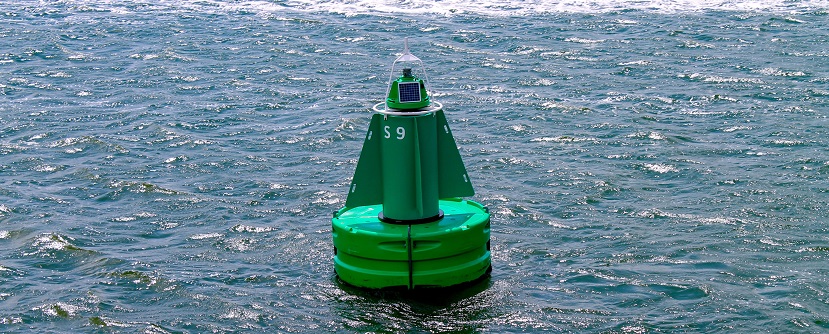How digitalising our oceans can help monitor and protect them
With the development of networks and increased interconnectivity, improved and innovative technologies are showing promising signs for fields such as ocean monitoring, especially in the current environmental, economic and political context.
Most current marine monitoring technologies are used for a wide variety of purposes, and depend on tools and equipment that have not changed significantly in the past few decades. However this new wave of innovation is pushing back the limits of what is currently possible and promises exciting opportunities to refine and improve the information we will be able to collect, and also deliver more powerful analysis capabilities.
Research vessels
Marine research vessels are the cornerstone of marine monitoring activities and are usually equipped with a range of tools allowing them to evaluate and track fisheries’ activities, water quality, sea-bed mapping, and sampling. Increasingly we are seeing marine vessels taking on the role of launch-pads for remotely-operated and autonomous marine vehicles, which means having extra capabilities on-board such as charging stations for untethered devices or power delivery systems for tethered devices, as well as command and control centres. Increasingly sophisticated equipment and data collection leads to a need for higher performance interconnect systems such as fibre optics, allowing for high-speed data transfers. This in turn is usually accompanied by the need for more electrical current to power an increasing number of components, and more powerful propulsion systems.
ROVs
Remotely-operated vehicles provide an exciting opportunity to gather more and better data about our oceans, especially in areas that are difficult to access. Autonomous-underwater vehicles (AUVs) are the next generation of ROVs with a more advanced propulsion system and extended autonomy, making them ideal for applications such as sea-bed mapping and locating wrecks.
These types of vehicles can present serious engineering challenges, as they operate in widely varying environments that can be harsh (salt water, cold, UV exposure, etc). They are particularly prone to corrosion as they are constantly submerged and surfaced, and are constantly subjected to different levels of pressure as they dive and surface repeatedly.
Smart buoys
Smart buoys are also becoming an area of focus for marine monitoring, particularly promising thanks to innovation in telecom networks. Compared to the first two, these smart buoys are much less expensive to deploy and maintain, and can provide a wealth of data including temperature, pressure, salinity, oxygen density, wind direction and so on. This data would be of significant value for a variety of applications including ocean monitoring but also fish farms, coral reefs and pollution monitoring.

The function of the buoys depends on the sensors that are integrated in it. Biogeochemical sensors can deliver data about water quality and wildlife monitoring, but if the buoys include geolocation and real-time communication technologies, they can be deployed to create zones that can monitor and alert the administrators of certain situations. This could be a safety zone around the beach where boats are banned, and the buoys could pick up a signal that a boat has entered the zone and send out an alert to notify the safety guards who could then take action almost immediately. Wave data is another field that is increasingly being studied, particularly in early-warning systems to anticipate potential flooding or high tides. Wave movements allow scientists to model forecasts of coastal flooding and are used by engineers designing coastal sea defences as well as offshore structures.
The common denominator in all these applications is the need for advanced electrical and electronic systems that can withstand the unique and tough environment of marine exposure, and also deliver high power and high speed. The need for ultra-reliability is also key, as these systems are generally in areas that are difficult to access, whether it is a ROV at 200m underwater or a research vessel in the middle of the ocean. It is for these reasons that manufacturers of marine equipment will need look for a high performance, high reliability specialist to deliver bespoke solutions.
SOURIAU, world leader in interconnect solutions for harsh environments, introduces the SWIM harnesses and connectors, especially designed for immersion up to 300m.
Immersible connectors have to meet specific mechanical and chemical constraints. SOURIAU has been active in this market for a very long time with connectors for submarines, oceanography, marine renewable energies and the oil industry and is now introducing a range of harnesses and connectors designed for shallow water immersible equipment, the SWIM Series.
You can view our press release about the SWIM Series by clicking below, and if you have any questions about our marine interconnect solutions please contact our technical support team.
[EN] SOURIAU introduces a range of SWIM harnesses and connectors for shallow immersion
[FR] SOURIAU introduces a range of SWIM harnesses and connectors for shallow immersion
[ES] SOURIAU introduces a range of SWIM harnesses and connectors for shallow immersion
[IT] SOURIAU introduces a range of SWIM harnesses and connectors for shallow immersion
[JP] SOURIAU introduces a range of SWIM harnesses and connectors for shallow immersion
[CN] SOURIAU introduces a range of SWIM harnesses and connectors for shallow immersion
[KR] SOURIAU introduces a range of SWIM harnesses and connectors for shallow immersion
[DE] SOURIAU introduces a range of SWIM harnesses and connectors for shallow immersion
